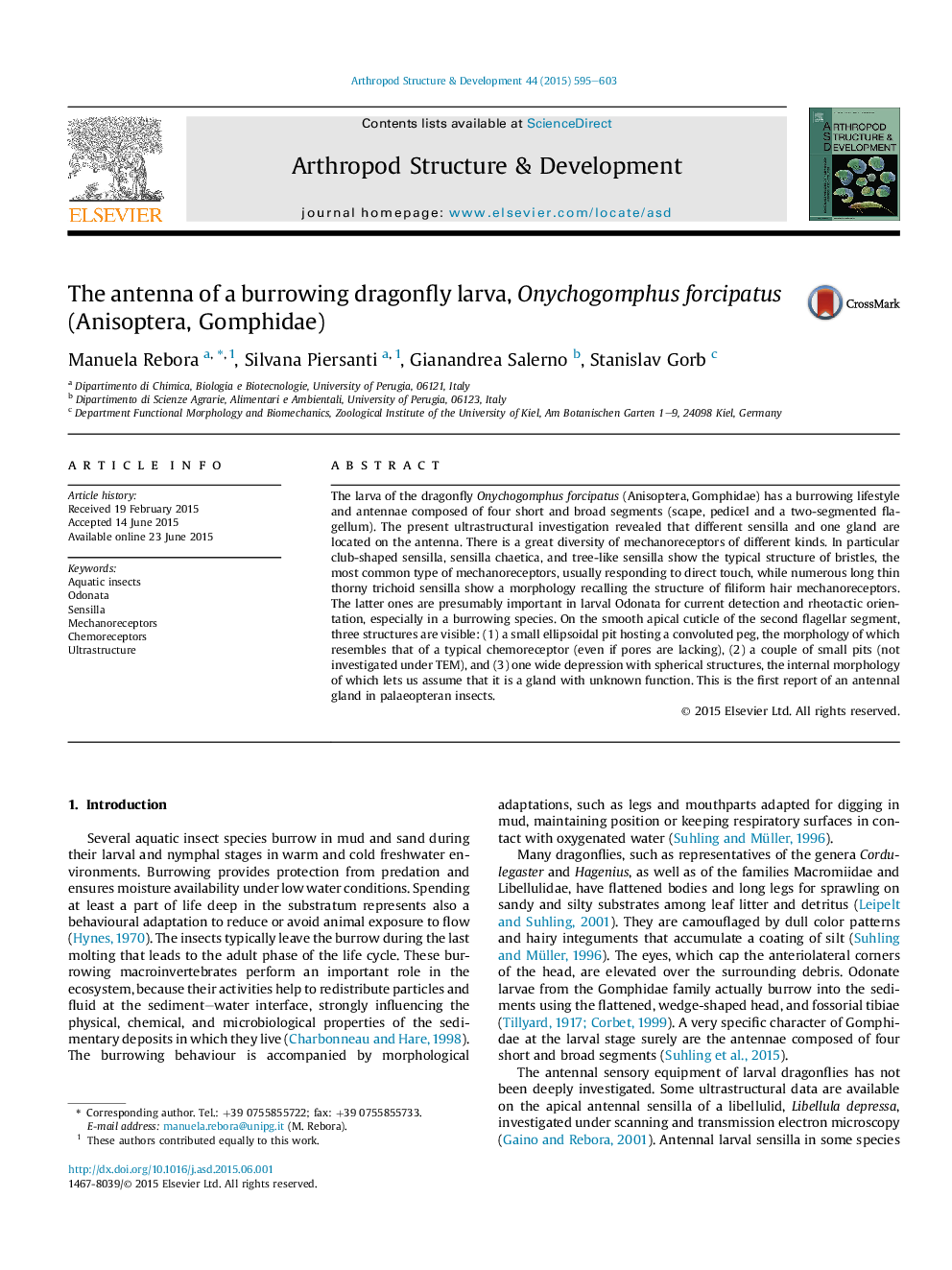| کد مقاله | کد نشریه | سال انتشار | مقاله انگلیسی | نسخه تمام متن |
|---|---|---|---|---|
| 2778578 | 1153146 | 2015 | 9 صفحه PDF | دانلود رایگان |

• The larva of the dragonfly Onychogomphus forcipatus has a burrowing lifestyle.
• This is the first ultrastructural investigation (SEM, TEM) on its antennal sensilla.
• Numerous mechanoreceptors and one possible chemoreceptor are described.
• The mechanoreceptors are mostly filiform hairs presumably for current detection.
• This is the first report of an antennal gland in palaeopteran insects.
The larva of the dragonfly Onychogomphus forcipatus (Anisoptera, Gomphidae) has a burrowing lifestyle and antennae composed of four short and broad segments (scape, pedicel and a two-segmented flagellum). The present ultrastructural investigation revealed that different sensilla and one gland are located on the antenna. There is a great diversity of mechanoreceptors of different kinds. In particular club-shaped sensilla, sensilla chaetica, and tree-like sensilla show the typical structure of bristles, the most common type of mechanoreceptors, usually responding to direct touch, while numerous long thin thorny trichoid sensilla show a morphology recalling the structure of filiform hair mechanoreceptors. The latter ones are presumably important in larval Odonata for current detection and rheotactic orientation, especially in a burrowing species. On the smooth apical cuticle of the second flagellar segment, three structures are visible: (1) a small ellipsoidal pit hosting a convoluted peg, the morphology of which resembles that of a typical chemoreceptor (even if pores are lacking), (2) a couple of small pits (not investigated under TEM), and (3) one wide depression with spherical structures, the internal morphology of which lets us assume that it is a gland with unknown function. This is the first report of an antennal gland in palaeopteran insects.
Figure optionsDownload as PowerPoint slide
Journal: Arthropod Structure & Development - Volume 44, Issue 6, Part A, November 2015, Pages 595–603